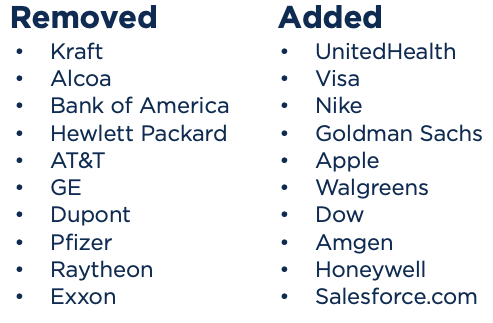 Note from the editor: The following post is an excerpt from The Revenue Acceleration Manifesto. You can read the full article here.
Note from the editor: The following post is an excerpt from The Revenue Acceleration Manifesto. You can read the full article here.
If 2020 taught us anything, it’s that there’s no such thing as certainty. While the pandemic’s effects have had the most direct and acute impact on businesses, it’s also uncovered several trends that have been changing the keys to success for sales, marketing, and customer success organizations.
The Imagine team spent much of the last half of the year digging deeply to identify these changes and craft an approach that enables small and mid-market companies to control their destiny better and tilt opportunity in their direction.
As you consider your approach to the future, be sure to account for these five major trends to determine whether you win the new business growth game.
Markets Are Noisier & Buyers Are More Confused Than Ever
Consider the following findings from Gartner’s research on today’s environment for buyer’s:
- 55% of customers say they encounter an overwhelming amount of trustworthy information during the buying process (emphasis mine)
- 44% struggle with the fact that information from various suppliers, while all seemingly trustworthy, was contradictory
- 89% of buyers feel that the information they encounter as part of making a purchase decision is of high quality
- Today’s customers spend 15% of their buying time reconciling or deconflicting information related to the purchase decision (emphasis mine)
All of this has a direct impact on the likelihood, quality, and satisfaction of the decisions sellers are asking buyers to make:
It’s no longer enough to have a strong sales process, a powerful message, and smart salespeople. Today’s top job for marketers & sellers is to enable the organizations and people in their targeted markets to make sense of their world and options (this is why Gartner refers to today’s best sales professionals as Sense Makers). Delivering on this requires new skills and mindsets and to manage more complexity through the buying journey. As Gartner Distinguished VP and coauthor of The Challenger Sale and The Challenger Customer said, “We now live in a world where insight is likely more table stakes than a differentiator.”
Sellers Are Less Present at the Critical Inflection Points Along The Buying Journey
In 1988 Neil Rackham released the most extensive study into successful selling with the book Spin Selling. He introduced the importance of creating value through the sale. He found that the highest form of value creation available to sales organizations (it applies to marketing organizations) occurs when they help buyers understand a problem they have that they either didn’t know about or didn’t fully understand.
This finding was confirmed and reinforced with The Challenger Sale (2011) study that was even more extensive than Rackham’s. The research findings’ central thesis was that salespeople who teach the prospect something about their business, tailor their pitch, and control the sales process are disproportionately likely to succeed.
More recently, from The Aberdeen Group’s 2019 report Demystifying B2B Purchase Intent Data:
73% of buyers are willing to meet with salespeople earlier than the consideration phase if they:
- Help them define their problems & needs
- Tell them something they didn’t know about the buyer’s category or competitors
- Provide objective information and help them frame their decision
- Challenge their way of doing business by highlighting a pain point or organizational need they weren’t aware of
That’s 41 years of proof, yet a study by Challenger, Inc found that sellers only play a role in helping buyers with problem identification 11% of the time.
Making matters worse, the current investments and approaches dominating today’s sales and marketing organizations continue to amplify this dangerous trend.
Consensus-Based Decision-Making Is Becoming The Dominant Buying Style
Ten years ago, the path to successful selling was to stake out the critical decision-maker, stimulate awareness, quantify the problem, and convince her that a change was needed. Candidly, that approach never worked as well as sellers thought it did, but today it’s one of the fastest paths to an expensive failure.
The average number of direct influencers (decision-makers) involved in a b2b purchase decision has increased by 25%, growing from 5.4 - 6.8, all with different and often conflicting objectives & priorities. The complication associated with so many influencers is one of the main reasons that nearly 40% of b2b buying processes end in “no decision.”
For most businesses, the problems they are addressing and the required solutions are far too complex and nuanced and will impact multiple areas of the company. No one person can understand and navigate it all.
Successfully navigating such a journey requires a highly orchestrated combination of people, process, and content from the selling organization, increasing the costs and risks associated with the sales effort.
Companies Lack the Data & Insight Needed to Make Quick, Effective & Confident Decisions
Data quality and accuracy is a top-two complaint from the majority of sales and marketing executives. Far too often, businesses have inadvertently created complicated Rube Goldberg contraptions to meld together bloated tech stacks and compile metrics and analytics. Not only does this fail to form a single source of truth, but it also creates multiple, conflicting pictures of what’s happening.
As the required rate for execution continues to increase, companies can’t rely on the simplistic dashboards and attribution schemas they currently use. The products that serious growth companies have acquired to help them track and retain data have overwhelmed them rather than enlightened them.
Decision-quality is atrophying. Companies must transform their approach to managing data and analyzing to generate strong hypotheses to generate insights and improve decision-making.
Sales, Marketing & Customer Success Processes, Bogged Down Dealing with Complexity, Are Forced to Pay a High “Friction Tax”
Over the last couple of years, we’ve had the opportunity to analyze nearly 200 companies’ sales efforts varying in size from 2 - 500 salespeople in more than 15 industries. With only a couple of exceptions, all of these companies were doing well, experiencing growth rates above industry averages. What’s striking is how poorly these companies are leveraging the sales and marketing investments, assets, and efforts. We routinely see results that are 1/2 - 2/3 of what they should be, given the size of their sales and marketing teams and investments.
Yes, these companies are growing, but they’re paying a significant tax, what we’ve dubbed a “Friction Tax,” for that growth. We’ve discovered the most significant difference between high-performing companies and those performing slightly above average is this utilization rate. Simply put, the best companies are effectively managing the friction that naturally occurs in growing organizations, and everyone isn’t.
Good Enough Isn’t Enough Anymore
It’s no wonder that people are exhausted. Every day they’re being asked to do more with less and to do it faster at the same time. The world has been obsessed with speed, even when it comes at the expense of velocity. Customer acquisition costs are rising, margins are continually under pressure, and as the last year has illustrated, predictability appears to have been a myth.
Twenty years ago, the go-to strategy was to be disruptive. Today the biggest challenge facing every person and business is to find a path that enables you to excel in an environment that is continually disruptive or destructive.

Consider the companies that make up the Dow Jones Industrial Average (DJIA), the oldest index used to assess the stock market. The 30 companies that comprise the DJIA are among the most successful in the world. You don’t become a part of the DJIA by accident.
Despite their successes and deep resources, 1/3rd of the DJIA has been replaced. When you look at the differences between the companies, meaningful insights present themselves.
There’s A New Game, And Winning It Requires A New Mindset & Approach
”In business, the new game begins before the old one ends” - Clayton Christensen, author & Harvard Business School professor
The game businesses are playing has changed. There are new rules, new risks, and new stakes. For decades businesses have paid lip service to the idea that the customer is everyone’s boss. Today your business better be taking that adage seriously. And I’ve got some news, our boss - the customer - is fickle, demanding, and often has unreasonable expectations.

 Doug Davidoff
Doug Davidoff
